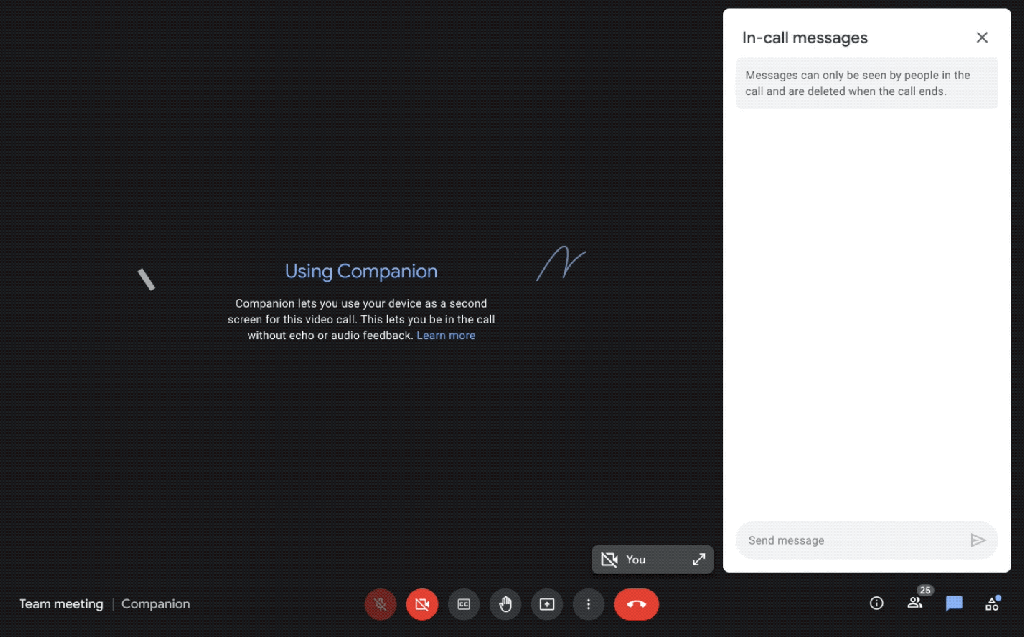While text chatting with classic Hangouts is still possible today, Google has killed most of the legacy service’s video calling features. Google will soon restore a familiar capability that lets you make direct calls using Meet without having to generate a link ahead of time.
- Meet ‘Series One’ adds 27″ & 65″ AIO touchscreens w/ whiteboard stylus, USB-C monitor mode
- Google’s rename of ‘Rooms’ in Chat and Gmail to ‘Spaces’ is now underway
Today, setting up a Meet call involves giving participants a URL. In Google Chat, you can quickly insert an invite like to start a session. This makes sense for group meetings — with video links now normalized — but feels somewhat excessive when you’re just talking to one person.
Direct “Google Meet calling” is the company’s attempt to make “meetings more spontaneous.” In Google Chat, you’ll get a “video” button to quickly start a call. The “phone” icon next to it lets you make audio-only Meet calls without video. This behavior is similar to classic Hangouts, Google Duo, and other consumer video communication apps, with Meet having to increasingly target both casual and enterprise audiences.
This will ring their device running the Gmail mobile app and send a call chip to Gmail running in a web browser, so they can easily answer from any device
It’s rolling out “soon” for one-to-one chats in the Gmail mobile and standalone Chat apps. However, it will come to “other Workspace endpoints in the near future.”


Google today also provided an update on Meet’s upcoming Companion Mode. This second-screen experience lets you use one device for audio/video and another computer to better see what’s being presented, respond to and create polls/Q&A, access meeting chat, and whiteboard. You can also share/mirror your screen from that second device.
This will begin rolling out in November (previously September), with Google also working on adding the ability to read live-translated captions in Companion Mode by year’s end:
We’re currently working on translating meetings in English to French, German, Spanish and Portuguese, with many more languages coming in the future.

